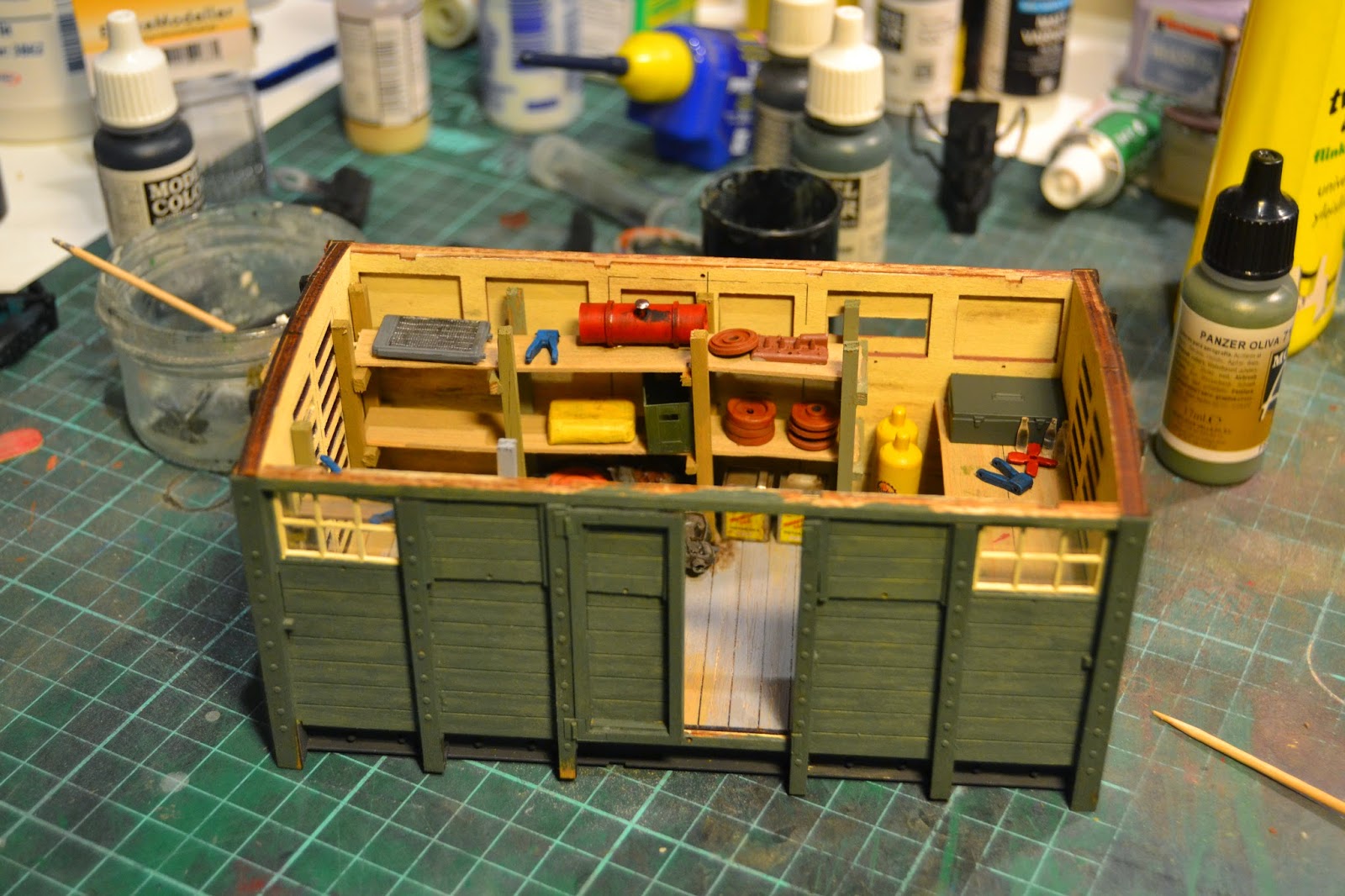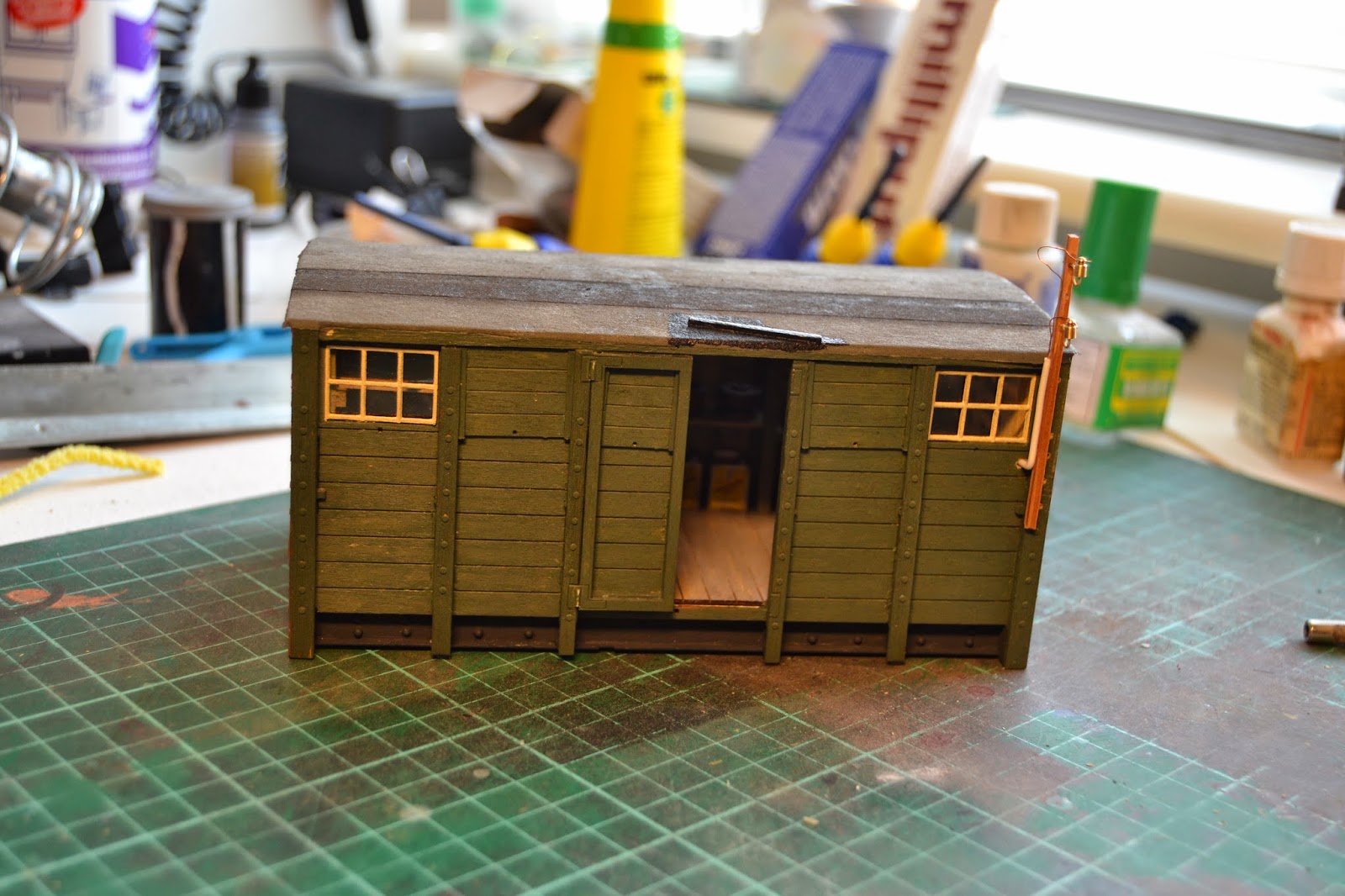Some time ago I mentioned that I had been working on combining the resin cab I bought from Brazil last summer with the 1:35 ICM kit of the Ford G917T. As usually for ICM the kit has many small parts. I'm probably getting used to ICM's kit design as I got the chassis and wheels assembled quite quickly and without the usual frustration. Some info on the Ford G917T kit can be found here. To fit the new cab I performed minor surgery to the chassis.
 |
| Finished chassis. The supports for the foot boards are destined for removal, though. They serve no purpose for the new cab. |
The double cab is a real piece of kitchen table resin casting, probably done in very small numbers. It takes some work to clean up, but is better cast than the Ford van I built last year. I'm full of admiration for the dedicated modellers world wide that helps to supply parts or kits of obscure prototypes.
 |
| The resin cab is primed and painted on the inside. It needs a little repair here and there with Miliput. |
I'm working on the figures I plan to place in the cab. I work from the set 'German Artillery Crew Riders' (no. 35040) from MiniArt. It involves some macabre amputations of legs and sanding of rear ends. I also cut off any detail that is of a military nature and modelled new cloth caps from Miliput. Unfortunately the Miliput failed to harden properly. After several days it was still soft and tacky. I usually get the mix of the two rolls right, maybe the Miliput was too old? New pack of Miliput opened, mixed and new caps modelled. Not too much will be seen of the figures through the windows, so I hadn't planned spending much time on the figures.
 |
| Three figures for the cab. Two caps and one upper head in progress. Work with sand paper is next. Driver still needs arms. They will no doubt be sourced from the spares box, as was his co-driver's. |
The cargo bed had to be shortened to fit the chassis. That was no major task. The shortening of the sides were, however. I had to cut each side into four pieces to remove the right amount of material at the right spot to achieve the desired spacing of the metal strapping. Not difficult but time consuming. As the kit supplies two cargo beds I took advantage of the extra parts and made the sides on the lorry double height. With high sides the lorry could carry the maximum load even if the load was light and high volume (like peat or brown coal).
 |
| Chop-chop! A very laborious way of trimming a piece of plastic. |








